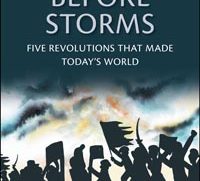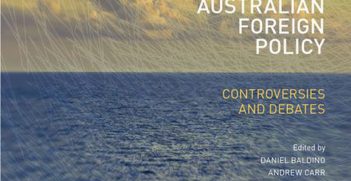Australia's 'War on Terror' Discourse

There cannot be a more fitting time than now to review Kathleen Gleeson’s Australia’s ‘war on terror’ Discourse. In the last few months, Australia has paused to remember 10 years since the Cronulla riots; considered the broader societal implications of arresting and potentially sentencing a 15 year-old boy to a life in prison for an alleged terrorist plot; and debated an opinion piece by former Prime Minister Tony Abbott where he called for a ‘religious revolution’ inside Islam and declared that ‘all cultures are not equal.’
Providing a ‘lens through which terrorism and counter-terrorism have come to be understood in Australia’, Katherine Gleeson’s ground-breaking work is a comprehensive analysis of the discourses that surround these issues. Offering an insightful account of the origins of Australia’s post-9/11 ‘war on terror’ discourse, this book helps us to understand how language, power and politics work together to create political possibilities in Australia today. As Australia faces an increased likelihood of terrorist attacks within its borders, Gleeson’s work can help us to comprehend the dangers and power of discourse in inflaming tensions or, alternatively, building social cohesion. Her detailed analysis of the architects and architecture of this discourse should now be a guide for politicians and community leaders who seek to navigate Australia through this difficult issue.
Gleeson argues that then, as now, these discourses are dangerous. They are elite-led, exclusionary, incite fear and do not decrease the instances of terrorism.
The book covers the period from the 9/11 attacks to the end of the Howard Government in 2007. Gleeson sees the origins of the ‘war on terror’ discourse not so much in the events of 9/11 as in the Howard government’s response. Pinpointing particularly his decision to label the attacks as an act of war (as opposed to a crime) and his somewhat knee-jerk and inappropriate decision to invoke the ANZUS treaty, Gleeson argues that John Howard created a framework of a globalised war of ‘us and them’. As a powerful discourse that gathered broad traction within the Australian community (not, of course, forgetting the strong and vocal critique), this discourse, once embedded, circumscribed the range of legitimate political possibility.
Using a genealogical and critical discourse analysis approach, Gleeson forensically examines the main speeches, announcements and debates of the six-year period. By identifying solid themes in the discourse, as it was particularly developed by Howard and his ministers, Gleeson tracks the capacity for the discourse to support Australia’s increasing involvement in the ‘war on terror’.
According to Gleeson, this discourse, masterfully conducted by Howard, resonated with the Australian public. The source of this resonance is a historical allegiance to a narrative of Australian security (or insecurity) drawn from fear, exclusion, violence and sovereign anxiety. Drawing from examples of events throughout Australia’s history, Gleeson notes the use of historical experiences and memories from the Frontier Wars to the Colombo Plan that provides the historical foundations for the ‘war on terror’ discourse. Describing this as a ‘deep cultural grammar’, Gleeson demonstrates that while Howard embraced elements of this history, he was also constrained by it. Even though Howard’s own self-modelling on Menzies along with his allegiances to political identity markers associated with mateship and Christianity underpin the sense of legitimacy that was given to this discourse, the historical foundations gave him little room to move.
The final substantive chapter of the book turns to dissent. Here, importantly, we can again identify lessons for today. Gleeson argues that these discourses can (and implies should) be resisted. Her analysis finds that while few were able to successfully challenge it, the key to success is found in ‘harnessing hegemony – that is, using the terms of the discourse to challenge aspects of it.’ By examining several sites of resistance, Gleeson shows how a broad spectrum of Australian commentators, drawing from culturally embedded Australian values, can offer a counter-point to these discourses.
One proponent of resistance to the dominant security discourse is the father of a son who was killed in the 2002 Bali bombing. Writing an open letter to John Howard that was published in The Australian, Brian Deegan drew comparisons between Howard’s overzealous support of the US in its ‘war on terror’ and his son’s death. While Howard gently dismissed him as a grieving parent, social commentary around the issue showed strong support for the father.
In another example, the 2005 Cronulla riots, which Gleeson describes as a “localisation of the ‘war on terror’ discourse’”, was also a site of a counter-hegemonic discourse. Gleeson provides an analysis of the ‘On the Same Wave’ campaign run by Surf Life Saving Australia to create greater social cohesion through diversity programs on Cronulla beaches. These counter-hegemonic discourses are important interventions but discourses are themselves like waves: not linear in progression and moving back and forth.
This is demonstrated by the fact that 10 years later, Australian attention returned to Cronulla beach. The Supreme Court of New South Wales banned a far-right group from holding a rally to mark the 10th anniversary of the riots on the grounds that it would stir up racial hatred.
This is a timely reminder, as Gleeson teaches us; discourses have profound power and impact and it is beholden on us all to understand their political operation in our society.
Katherine Gleeson, Australia’s ‘war on terror’ Discourse, Ashgate, 2014.
Reviewed by Dr Katrina Lee-Koo, Senior Lecturer in International Relations, Monash University.





